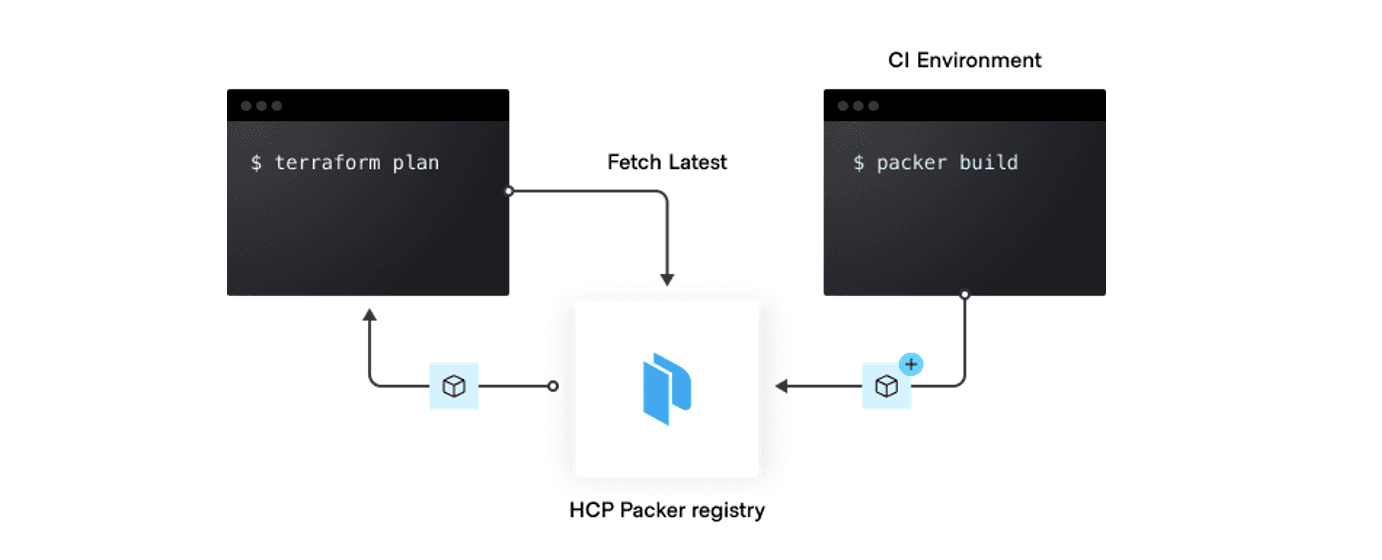HCP Packer is a new suite of cloud-based services designed to enhance HashiCorp Packer workflows. The first service we're working on, announced today at HashiConf Europe, is the HCP Packer registry, a metadata tracking tool that aims to bridge image factories and image deployments. The service is currently in development on the HashiCorp Cloud Platform (HCP), and will be available as a beta in the coming months. Sign up to be part of the HCP Packer beta program.
Development and security teams will be able to collaborate via HCP Packer to create image management workflows that ensure images are up to date. While HCP Packer is not “Packer in the cloud,” it is designed to support your existing workflows. Teams that use Packer and HashiCorp Terraform should find HCP Packer especially helpful.
We have three initial goals for HCP Packer:
- Simplify image lifecycle management. HCP Packer’s registry aims to reduce the complexity around creating, tracking, and using image artifacts.
- Centralize governance. You should be able to define your own image-release channels to ensure adoption of the latest approved builds.
- Support your current workflows. We want HCP Packer to integrate seamlessly into your existing Packer and Terraform workflows.
If you want more insight and control over your images — not just in development but in production — consider giving HCP Packer a try.
»HCP Packer Use Cases
Many organizations have built Packer image pipelines where one team may create and maintain a base image. From there, that same team, or other teams, build layers on top of that base. The end result is a golden image with different installed packages and technologies to suit a particular need.

If images are built in many stages, it can be tough to try to figure out which image was built from what. You can end up with complex dependency trees that you need to tease apart, and then keep each step in that dependency tree up to date. That’s how the HCP Packer registry can help. We’re envisioning a service that will:
- Track these image dependencies for you — both what a given image depends on, and what images depend on a given source.
- Track images built from the same Packer template across different clouds and versions of the template. That capability would let users see which images across clouds are functionally equivalent.
- Act as a data source for both Packer and Terraform. This way, users can automatically pull a specific version of an image for the environment about to be provisioned.
- Allow users to set mutable and customizable release channels for images. Packer and Terraform could then, for example, request the "prod-stable" version and get the latest image promoted to that channel, presumably after some form of internal validation.
That’s only the beginning, of course. There are many directions that HCP Packer can go over time. In particular, we think there are exciting opportunities to improve governance and security workflows. Stay tuned.
»How Will the HCP Packer Beta Work?
We expect HCP Packer to work with recent versions of Packer and your existing workflows. Once you’ve been granted access to the beta, you would just need to set a few environment variables, and Packer would send artifact information to the service, making it available for use. We also plan for there to be more advanced configuration options available within Packer templates.
Sign up for more information about the upcoming beta launch and how to use the HCP Packer registry. Watch the HashiConf Europe 2021 keynote announcement of HCP Packer below:









